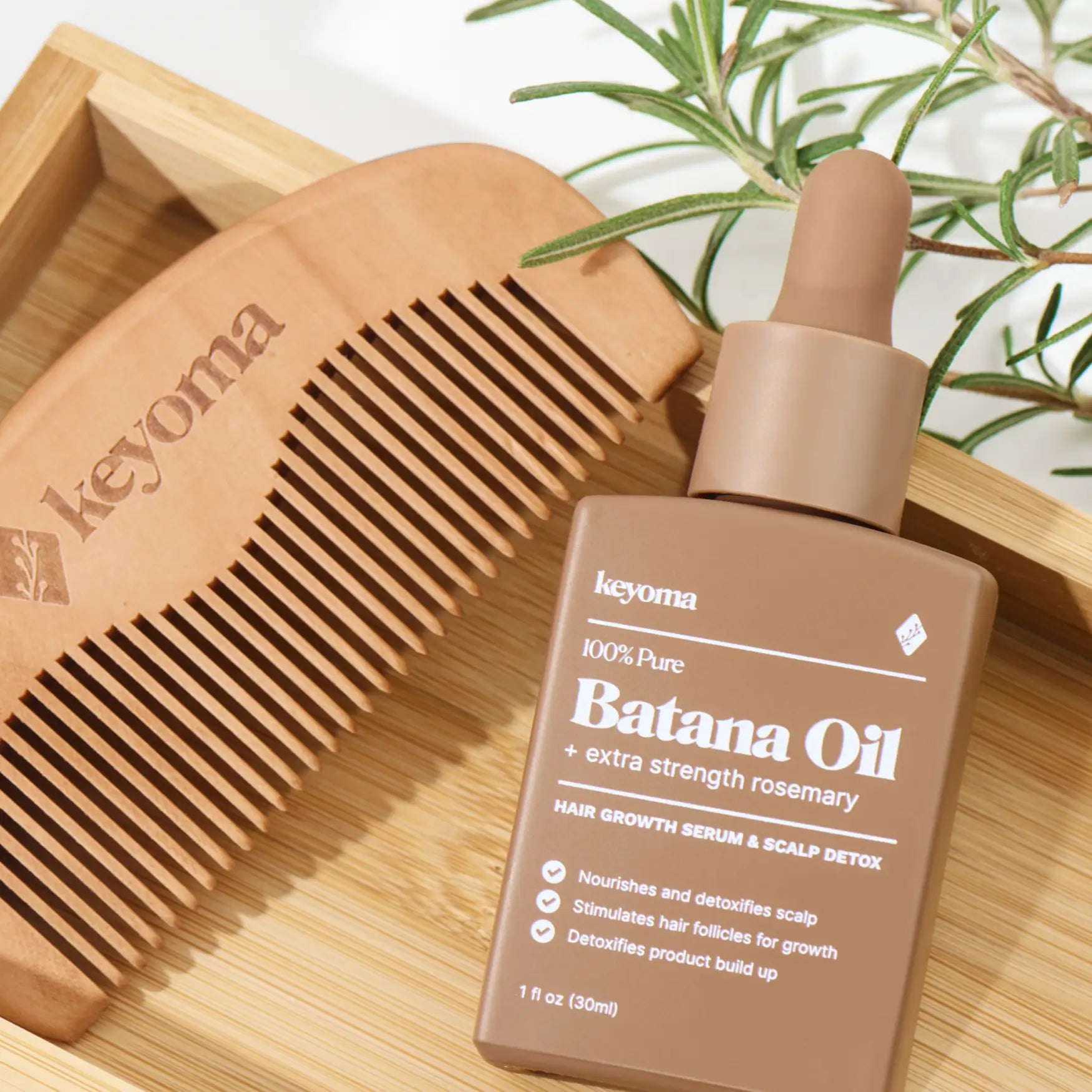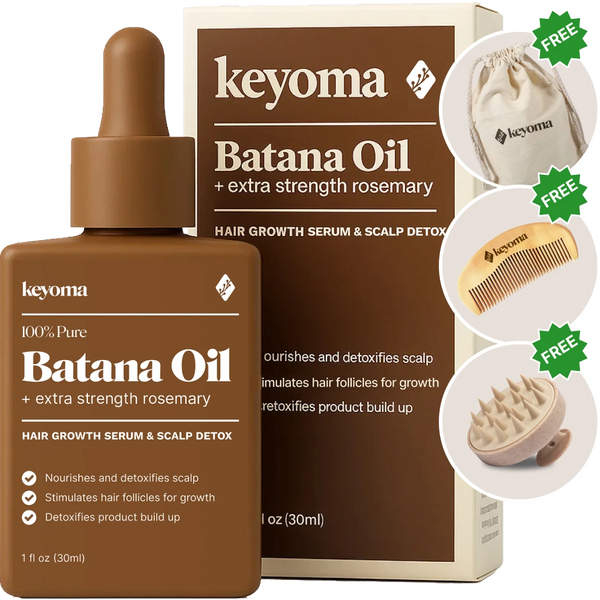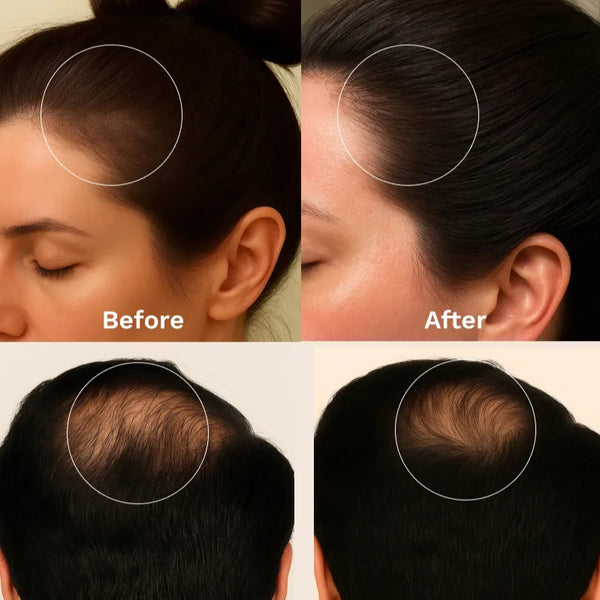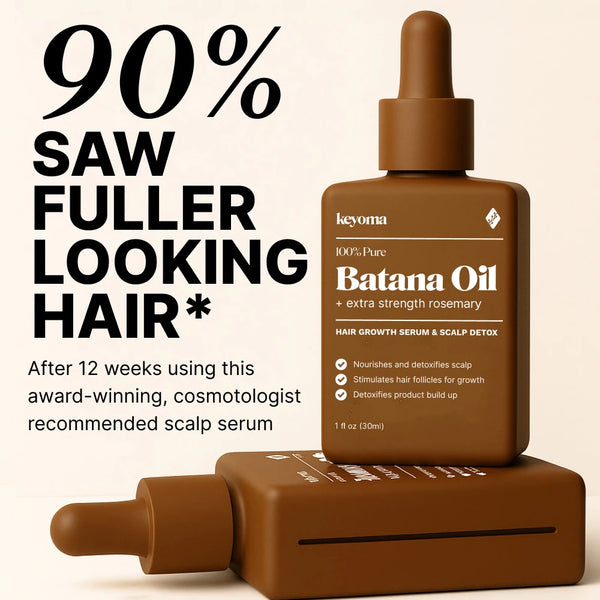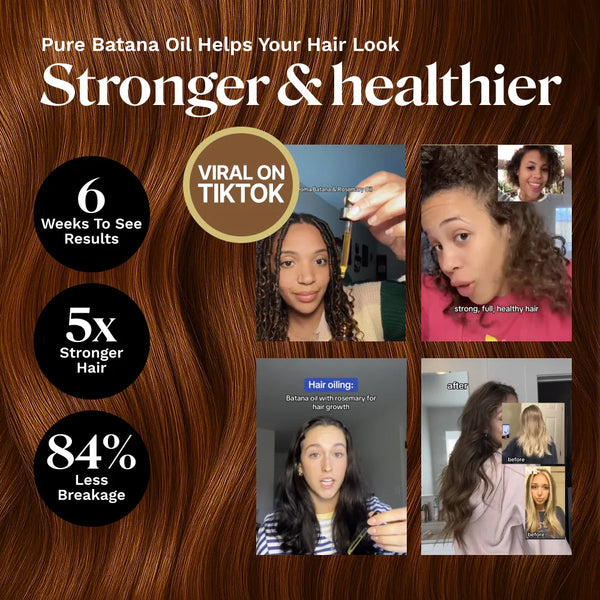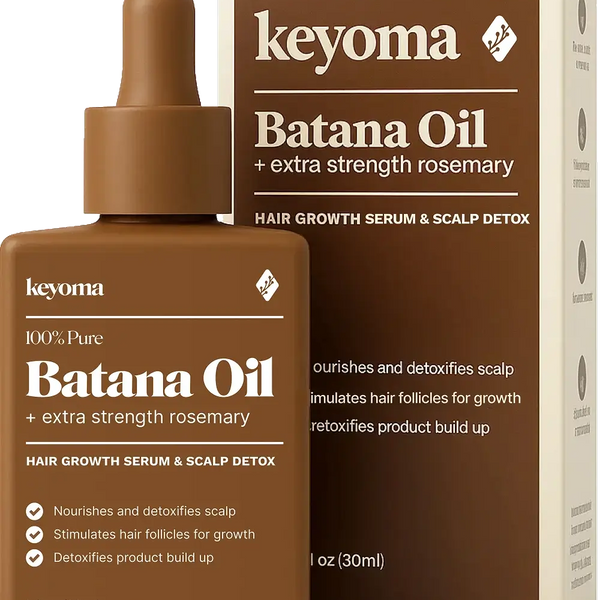In this article
You see actors, athletes, and influencers pulling off clean, stylish beards effortlessly, and suddenly, the clean-shaven look doesn’t seem so appealing anymore.
And if you’re bald (or starting to bald) you probably know how a beard can completely change the game. It makes the face look more masculine, more defined, and for many, more confident.
But here’s the tradeoff that most guys don’t really talk about with each other: beard itch. It often starts as a mild tickle but, if left unchecked, can turn into irritation, flakes, or even painful bumps.
Fortunately, you don’t have to live with it forever. In this guide, I’ll walk you through what actually causes beard itch, how to get fast relief, and the kind of routine that keeps your beard looking sharp, all without the scratching that comes with it.
What Causes an Itchy Beard?
New Facial Hair Growth
If you've finally decided to grow your beard out, chances are, it's gonna itch. And for some unlucky ones, that itch can get intense. This irksome, prickly phase all comes down to something simple: new facial hair growth.
During this stage, freshly sprouting hairs are still coarse, with sharp tips that poke the skin as they curl or press back into it. That tiny bit of friction is enough to trigger irritation and that constant crawling sensation, especially in men with curly or wiry beards.
This usually happens within the first 1–3 weeks of skipping the razor, particularly if you’re growing out stubble or transitioning from a clean shave.
At the same time, your skin’s oil production hasn’t quite caught up to the sudden change. It’s used to being bare, but now it has to hydrate a new layer of hair—an adjustment that can lead to dryness, tightness, and yes, itch.
Dry Skin
Dry skin, also known as xerosis, is one of the most common reasons beards start to itch.
It happens when your skin doesn’t produce enough natural oil (sebum) or when that oil gets stripped away by habits like using harsh cleansers (especially those with sulfates or alcohol), taking hot showers, or overwashing.
When dry skin sits beneath facial hair, that tightness feels even worse. The hair traps dead skin cells against the surface, which only makes the itch more noticeable. You might also spot flaking, patchy redness, or that telltale “beardruff” on your shirt.
Ingrown Hairs
Ingrown hairs happen when a hair grows back into the skin instead of out of it, usually as a result of shaving too aggressively, using dull razors, or pulling the skin tight while shaving.
Once a hair becomes trapped under the skin, the body treats it like a foreign object. That sets off a defensive response, leading to inflammation, swelling, and itchiness that can quickly turn into a painful red bump or even a pus-filled pimple.
If scratched or picked, it can also cause scarring or dark spots.
Men with curly or coarse beard hair are often the most frustrated by this, since their strands are more likely to curl inward and re-enter the skin, especially when the follicle opening is blocked by dead skin or oil.
Seborrheic Dermatitis
Seborrheic dermatitis may sound clinical, but it’s basically what most people know as beard dandruff. It’s a chronic skin condition that causes red, flaky, and itchy patches, especially in oily areas like the scalp, eyebrows, and yes, the beard.
The main culprits? Overactive oil glands and a yeast called Malassezia that naturally lives on the skin. When oil builds up and this yeast overgrows, it throws your skin’s barrier off balance, leading to inflammation and that familiar beard itch.
Men with oily skin, weakened immune systems, or a history of scalp dandruff are more likely to deal with it. However, it also tends to flare up during colder months, periods of high stress, or when you skip regular cleansing.
Folliculitis
Folliculitis is a skin condition where hair follicles become inflamed, usually due to a bacterial, fungal, or yeast infection.
It often shows up after shaving, sweating (especially in athletes), or using unclean razors and clippers. Even tight collars or frequent face-touching can trap bacteria and trigger irritation.
The itch usually starts subtle—almost like regular beard dryness—but can quickly turn into stinging or burning if left untreated.
You might also notice clusters of red bumps or pus-filled pimples along your jawline, neck, or cheeks. Sometimes, these can crust over or leave dark marks afterward, especially on deeper skin tones.
Tinea Barbae
Tinea barbae is just a fancy name for a fungal infection in the beard area. It’s caused by dermatophytes, the same type of fungus responsible for athlete’s foot and ringworm.
Once the fungus settles in, it causes inflammation and breaks down the skin barrier, leading to deep, persistent, and often painful itching. It can also bring swelling, scaly patches, pus-filled bumps, or hairs that fall out easily when tugged.
In some cases, it can even mimic severe acne or even look like an abscess.
This condition spreads through direct skin contact or by sharing grooming tools. That’s why it’s more common in men who work closely with animals (like farmers or veterinarians) or come into contact with contaminated items like dirty clippers or towels.
Sycosis Barbae
Sycosis barbae is a deep bacterial infection of the hair follicles in the beard area. Unlike mild folliculitis, which stays on the surface, sycosis affects multiple follicles and goes deeper into the skin, making it more painful and stubborn
This usually develops from repeated shaving over irritated or already damaged skin. Razors that aren’t cleaned well, shaving too close, or frequent nicks can create tiny openings, allowing bacteria (often Staph aureus) to slip in and infect the follicles.
As the infection takes hold, the body launches an inflammatory response. That’s where the intense itching begins, paired with painful, red bumps or pustules, swelling, and sometimes oozing or crusting.
In more advanced cases, scarring or bald patches in the beard can occur.
Pseudofolliculitis Barbae
Pseudofolliculitis barbae is a chronic inflammatory condition caused by hairs re-entering the skin, usually when freshly shaved strands curl back before fully exiting the follicle.
What makes it different from a random ingrown hair is that it’s systemic. Dozens of hairs can get trapped in this loop, leading to repeated flare-ups that rarely go away unless shaving is stopped or significantly changed.
It usually appears along the jawline and neck, where razors press closest. You’ll often see clusters of red or dark bumps, tenderness, and chronic itch, sometimes with scarring or post-inflammatory hyperpigmentation.
And since it’s not technically an infection, antibiotics don’t always help.
Allergies or Sensitivities to Certain Grooming Products
If your beard starts itching shortly after using a new product, there’s a good chance you’re dealing with a product allergy or sensitivity. This can happen with anything from beard oils to shampoos, even the “natural” ones.
The biggest culprits, however, are synthetic fragrances and preservatives like parabens or formaldehyde releasers. Even essential oils can be a problem if they're too concentrated or if your skin is already reactive.
These ingredients can disrupt the skin barrier or trigger immune responses that lead to inflammation and itch.
This type of beard itch tends to feel more like a surface-level irritation or burning, often accompanied by redness, tightness, or dry patches. In some cases, you might also see tiny bumps or a rash where the product was applied.
Home Remedies and Treatments for Itchy Beard
Good Beard Hygiene
Not only does good hygiene make your beard smell better, but more importantly, it clears away the buildup of dead skin, trapped oils, sweat, and bacteria—all of which are, more often than not, the real culprits behind that itchy beard mess.
It all starts with a proper wash, especially if you’re physically active, live in a hot or humid climate, or work all day in a dusty environment. In this regard:
-
Wash your beard daily with lukewarm water, and rinse thoroughly.
-
Use a sulfate-free beard wash that’s gentle on both your face and hair.
-
Pat your beard dry gently, never rub with a towel.
Condition Your Beard
Unlike scalp hair, beard hair is thicker and more wiry. This means it pulls more moisture from your skin, leaving the area beneath drier and more prone to that tight, scratchy feeling.
A good beard conditioner replenishes that lost moisture and softens your beard so it doesn’t feel like sandpaper against your face.
When choosing a beard conditioner, look for labels that say “fragrance-free,” “sulfate-free,” or “formulated for sensitive skin.” Products with these features help prevent barrier damage and flare-ups. Bonus points if they include ingredients like aloe vera, glycerin, or panthenol.
As for application, use a dime-sized amount of conditioner or leave-in balm right after washing and patting your beard dry. Work it through with your fingertips, making sure it reaches the skin underneath.
Use Beard Oils
If you’re wondering, can beard oil stop the itch?, definitely. Beard oils act as leave-in moisturizers that hydrate both the hair and the skin underneath. They soothe irritation by softening coarse strands, reducing friction, and replenishing the natural oils your skin loses after washing or shaving.
Natural options like batana oil, jojoba, almond, and argan oil are lightweight and absorb quickly without leaving a greasy film.
The classic coconut oil works, too, although for some skin types, it can feel a bit heavy.
Essential oils like rosemary can also help soothe itching and support skin health. Just remember, they’re highly potent, so always dilute them with one of the carrier oils mentioned earlier and do a quick patch test to rule out any allergic reactions.
Proper Beard Shaving Technique
The way you shave plays a huge role in how itchy your beard gets, especially if you’re someone who shaves frequently or trims tight around the edges. Poor shaving habits can cause irritation, razor burn, micro-cuts, or even trigger ingrown hairs and folliculitis.
Good shaving technique, on the other hand, is all about minimizing trauma to the skin. Here’s how to do it right:
-
Soften the hair first. Shave after a warm shower or apply a warm towel to your face for 30–60 seconds to open pores and soften the beard.
-
Use a clean, sharp razor. Dull blades tug at the hairs and irritate the skin. Replace razors every 5–7 shaves, or sooner if you feel any drag.
-
Go with the grain. Shave in the direction your beard grows. Shaving against the grain might feel closer, but it raises your risk for razor bumps and itching.
-
Don’t press too hard. Let the blade do the work. Too much pressure scrapes the top layer of skin and can lead to redness and flare-ups.
-
Rinse your blade often. Every few strokes, run your razor under warm water to clear buildup, and keep it clean and effective.
-
Clean your gear. Rinse razors and trimmers thoroughly after use. Let them air-dry and occasionally sanitize with rubbing alcohol to prevent bacterial buildup.
And don’t skip post-shave care. Splash cool water on your face to calm inflammation, then follow with a gentle, alcohol-free moisturizer or soothing beard oil.
Stay Hydrated
Everybody knows hydration is vital for the body, but it’s surprising how rarely it gets mentioned when talking about beard care.
Staying properly hydrated keeps your skin supple and helps your sebaceous glands function as they should, which means a steadier supply of natural oils for both your face and beard hair.
It also improves nutrient delivery to your follicles, helping ease inflammation and reduce flakiness from the inside out.
Here’s what to do:
-
Drink water consistently throughout the day. Don’t just chug when you’re thirsty.
-
Increase your intake if you live in a dry climate, work out often, or drink coffee or alcohol regularly.
-
Pair internal hydration with topical moisture like beard oils to lock everything in.
Remember, no amount of beard oil will fix flakiness or itch if your body’s constantly dehydrated. Hydrate!
Medications
Some beard itches can’t be solved with oils, conditioners, or better grooming. If the itch stems from an underlying medical issue, medication may be necessary—and it’s usually prescribed or recommended by a dermatologist.
Here's a rundown of when meds are typically involved:
-
Seborrheic Dermatitis (Beard Dandruff): Topical antifungals like ketoconazole cream or shampoo, zinc pyrithione, or corticosteroid creams may be prescribed to reduce yeast and inflammation.
-
Folliculitis: Depending on whether it’s bacterial or fungal, treatment may include topical antibiotics (like mupirocin), oral antibiotics, or antifungal creams.
-
Tinea Barbae: Because it affects the deeper layers of the skin and follicles, this often requires oral antifungal medication such as terbinafine or itraconazole.
-
Sycosis Barbae: Deeper bacterial infections may require oral antibiotics, especially if the area is widespread or oozing. Topical antiseptics might also be used as a secondary support.
-
Allergic Reactions: If a product triggers an allergic flare, mild topical steroids or antihistamines can help calm the itching and redness.
-
Pseudofolliculitis Barbae: While not typically treated with medication, persistent cases may benefit from prescription retinoids or chemical exfoliants like glycolic acid to prevent hairs from curling back into the skin.
And as if this hasn’t been said enough, always consult a healthcare provider or dermatologist if the itch worsens, spreads, or doesn’t respond to over-the-counter care.
Surgeries and Procedures
In rare and severe cases, medical procedures or minor surgeries may be considered to address chronic beard itching, especially when it stems from scarring, recurring infections, or abnormal hair growth patterns that don’t respond to standard treatments.
Common procedures include:
-
Laser Hair Removal: A permanent hair reduction method that uses laser energy to destroy beard hair follicles, especially helpful for chronic pseudofolliculitis barbae.
-
Abscess Extraction or Drainage: Performed in a clinical setting to remove pus from deep, infected follicles caused by severe bacterial conditions like sycosis barbae.
-
Cosmetic Procedures for Scarring: Includes steroid injections or microneedling to soften thickened scar tissue and reduce residual itching from post-inflammatory skin damage. Often used when itching lingers long after an infection has cleared.
Always ask about risks, expected outcomes, and whether non-invasive approaches are still on the table before moving forward.
Frequently Asked Questions (FAQs)
Does beard length contribute to an itchy beard?
Yes, beard length may contribute to an itchy beard, but not because long beards are inherently itchy. The longer your beard grows, the more likely it is to trap dead skin, oil, and product residue, which can clog pores and irritate the skin underneath if not cleaned properly.
Why is my beard itchy when it grows out?
Your beard is usually itchy when it grows out because the tips of new beard hairs are sharp and stiff and can poke into the skin and trigger irritation. This is most common during the early stages of growth when your skin is still adjusting to having facial hair.
Does shaving make beard itch worse?
Shaving can make a beard itch worse if you're not using a proper shaving technique. Habits like shaving too close, using dull razors, or going against the grain can increase the risk of irritation, razor bumps, and ingrown hairs.
Why does my beard itch at night?
Beard itch often feels worse at night due to heat, sweat, or friction against the pillow. Plus, your skin’s natural oil production slows down during sleep, which can leave the area feeling tighter and drier.
Can stress cause beard itch?
Stress can cause beard itching because it increases cortisol, which in turn can trigger flare-ups of conditions like seborrheic dermatitis or eczema. It also slows skin healing and disrupts oil production, making your beard more prone to dryness and inflammation.
Soothe an Itchy Beard With Better Habits and Oils
Wrapping up, an itchy beard is a direct reaction to what’s going on beneath the surface. Each cause leaves a different trail of symptoms, but all of them point to one thing: your beard and skin are out of balance.
At the heart of nearly every solution is moisture. Hydration—both inside and out—keeps your skin barrier healthy. That’s why gentle conditioners and clean, nourishing oils are non-negotiables in your routine.
Keyoma’s Batana Oil Infused With Rosemary was made for this. It’s lightweight, deeply hydrating, and supports skin balance while calming inflammation, which is exactly what you want when your beard starts itching for no reason you can see.
Try it daily and see the difference for yourself!
Featured Product
100% Pure Batana Oil + Rosemary
↓Best Batana Oil to Buy↓
1 Month
Subscribe & Save
- 30-day supply delivered monthly $35
- 30% off for life $6
- Free haircare essentials kit $33
- Free custom wooden comb $10
- Free scalp massager $15
- Free eco-friendly travel bag $8
- 30-Day Money Back Guarantee
- Free Shipping
- Online portal for easy cancel, skip, or pause.
1 Month One Time Purchase
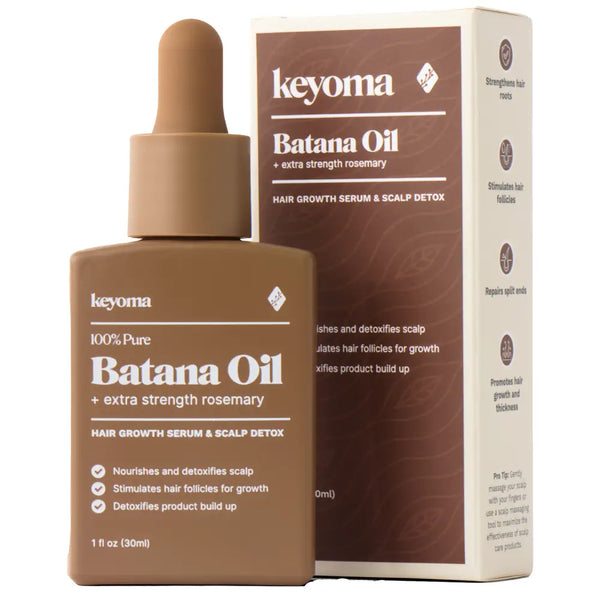
- 30-day supply $50
- 30% off for life $6
- Free haircare essentials kit $33
- Free custom wooden comb $10
- Free scalp massager $15
- Free eco-friendly travel bag $8
Your Cart
Your Cart is empty
Let's fix that
You might like...
Search our store


